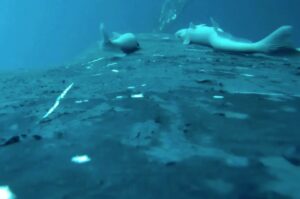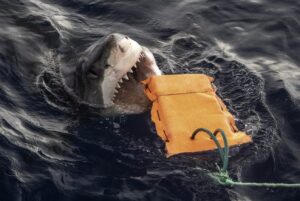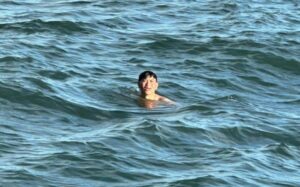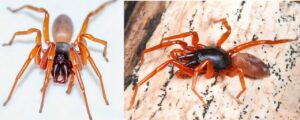It’s not easy to tell which part of a starfish is its head. Many scientists have assumed that starfish had very small heads or none at all. It turns out the complete opposite is true. They are essentially bodiless heads crawling around the ocean.
Wildly different
A new study declares that “echinoderms are mostly head-like animals.” Echinoderms refer to a variety of marine invertebrates including sea urchins, sea cucumbers, brittle stars, and sea lilies. Their morphology has made them difficult for scientists to study because they are wildly different from most other organisms.
Most animals have bilateral symmetry: You could split them down the middle and the left side would be the reflection of the right. Echinoderms have a fivefold symmetry in their bodies.

Fluorescent markers show the nervous system of a starfish. Photo: Formery et al., 2023
In bilaterally symmetrical animals, you can easily tell the head, main body, and tail apart. But how do you do that with something that has five-fold symmetry? Even more confusingly, the larvae have a bilateral body. Then the larvae settle on the sea floor and transform into five-sectioned organisms.

Starfish: a strange breed. Photo: Jerry Kobalenko
To find out more, the researchers turned to the evolutionary history of echinoderms. First, they completed a molecular study on bat stars (a type of starfish). Then they compared the molecular markers in the bat star with those of the deutreostome superphylum. A major group in the animal kingdom, all echinoderms and vertebrates belong to it and have a common bilateral ancestor. Researchers thought this might hold the key.
Fluorescent starfish
The team built a 3D map of the starfish’s gene expression. The scientists stained genes with fluorescent labels. By looking at how different genes expressed as the starfish developed, they could look at the animal’s morphology in much more detail.
“If you strip away the skin of an animal and look at the genes involved in defining a head from a tail, the same genes code for these body regions across all groups of animals,” co-author Christopher Lowe explained. “So we ignored the anatomy and asked: Is there a molecular axis hidden under all this weird anatomy?”

Fluorescent markers show gene expression. Photo: Formery et al., 2023
The team found gene markers for head development almost everywhere in growing starfish. The genes for a body and tail were almost nonexistent.
“The genes that are typically involved in the patterning of the trunk of the animal weren’t expressed in the ectoderm. It seems the whole echinoderm body plan is roughly equivalent to the head in other groups of animals,” said co-author Jeff Thompson.
As they have evolved, echinoderms seem to have completely lost the ability to create a torso. The evolution of their formation is far more complex than anyone thought, but it does seem to have been highly effective. The oldest starfish fossil predates the dinosaurs by 200 million years.






